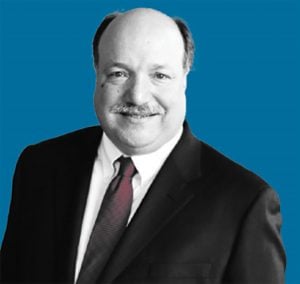 Ever since the 2006 PensionProtection Act catapulted it to universal prominence, the targetdate fund has become the de facto default investmentoption.
Ever since the 2006 PensionProtection Act catapulted it to universal prominence, the targetdate fund has become the de facto default investmentoption.
It seems so easy! You just fill in the blank with your year ofbirth and instantly, out spurts the answer to your retirementquestions.
|What could go wrong?
| Christopher Carosa,CTFA, is chief contributing editor for FiduciaryNews.com, a leadingprovider of essential news and information, blunt commentary andpractical examples for ERISA/401(k) fiduciaries, individualtrustees and professional fiduciaries.
Christopher Carosa,CTFA, is chief contributing editor for FiduciaryNews.com, a leadingprovider of essential news and information, blunt commentary andpractical examples for ERISA/401(k) fiduciaries, individualtrustees and professional fiduciaries.
Plenty.
|Ever since the 2006 Pension Protection Act catapulted thisobscure form of a balanced fund to universal prominence, the targetdate fund has become the de facto default investment option ofretirement savers. Today, these vehicles are about to surpass $2trillion in assets.
|That's a pretty big bet to place on a simple fill-in-the-blankquestion.
|Related: 10 factors impacting the target datemarket
|Target date funds have been effective at getting more people tosave for their retirement. That 2006 PPA didn't invent target datefunds, but it did create the rules for allowing plans to requireopt-out rather than opt-in decisions for employees. These rulesmandated the availability of qualified default investmentalternatives when plans chose the opt-out route. Target date fundswere defined as one of those default options.
|The idea behind these funds is to reduce equity exposure overtime. In theory, this is commendable. In practice, it's at bestunpredictable and, in the worst cases, outright wrong. First,there's no general formula that equates the date of a target datefund with a specific asset allocation. Each fund family has its ownphilosophy. In addition, portfolio managers can be allowedindividual discretion. As a result, retirement investors cannotassume the asset allocation of one 2030 target date fund willmirror the asset allocation of another 2030 target date fund.
|Wait! There's more! This defeats the whole purpose of thefill-in-the-blank question.
|It turns out, even if both 2030 target date funds are the same,neither necessarily works for some within the target age.
|Target date funds assume the flaw of the standard. They arepredicated on the average person, and very few people areaverage.
|Let's take the case of two hypothetical 60-year-olds. They wouldlike to retire at age 70 (in 2030) in order to maximize theirSocial Security earnings. But because those Social Securityearnings may not be the same, this means one will require moreretirement savings than the other. In addition, their expectedpost-retirement expenses may not be the same, meaning one canafford to retire with fewer assets than the other.
|Finally, one may have access to income sources (e.g., royalties,trusts, additional savings) that the other does not. This situationadds more pressure for one person's retirement savings to growfaster.
|The 2030 fund assumes the same growth rate for all shareholders,regardless of their specific circumstances.
|This problem becomes more acute as people get closer toretirement. Luckily, older people are less likely to use targetdate funds compared to younger people.
|According to the Investment Company Institute's 2019 Fact Book,nearly half of all 401(k) participants in their 20s use target datefunds. On the other hand, only one out of five in their 60s usethem.
|We can breathe a sigh of relief today. But what about in 40years?
|Read more:
- Retirement scores hit the green zone, but fewsavers are on target to cover all expenses
- Target Date Fund 2.0? Dimensional offers new TDFclass, but are they too late to the party?
- Don't mix target-date funds with other products:Morningstar
Complete your profile to continue reading and get FREE access to BenefitsPRO, part of your ALM digital membership.
Your access to unlimited BenefitsPRO content isn’t changing.
Once you are an ALM digital member, you’ll receive:
- Critical BenefitsPRO information including cutting edge post-reform success strategies, access to educational webcasts and videos, resources from industry leaders, and informative Newsletters.
- Exclusive discounts on ALM, BenefitsPRO magazine and BenefitsPRO.com events
- Access to other award-winning ALM websites including ThinkAdvisor.com and Law.com
Already have an account? Sign In
© 2024 ALM Global, LLC, All Rights Reserved. Request academic re-use from www.copyright.com. All other uses, submit a request to [email protected]. For more information visit Asset & Logo Licensing.








